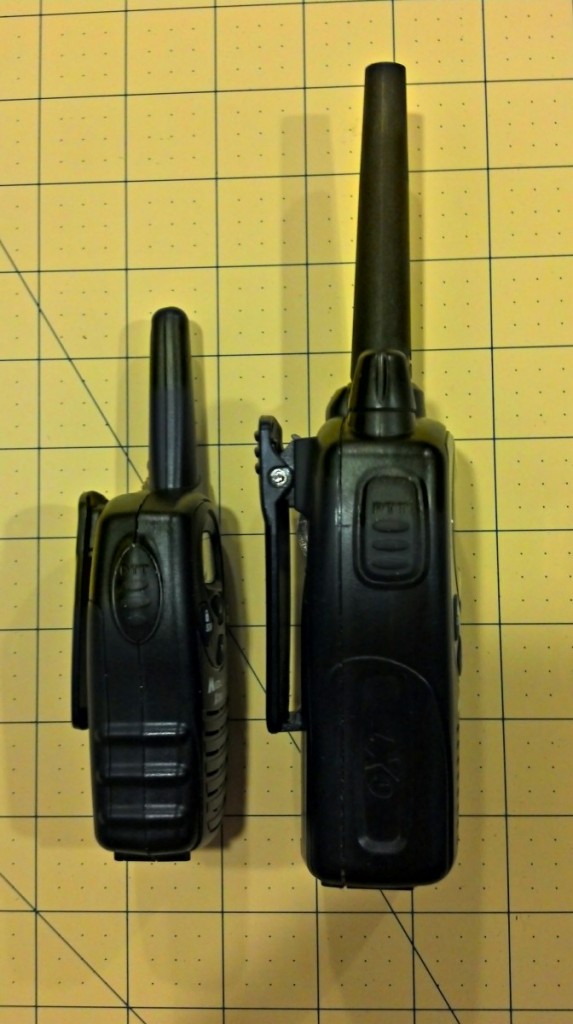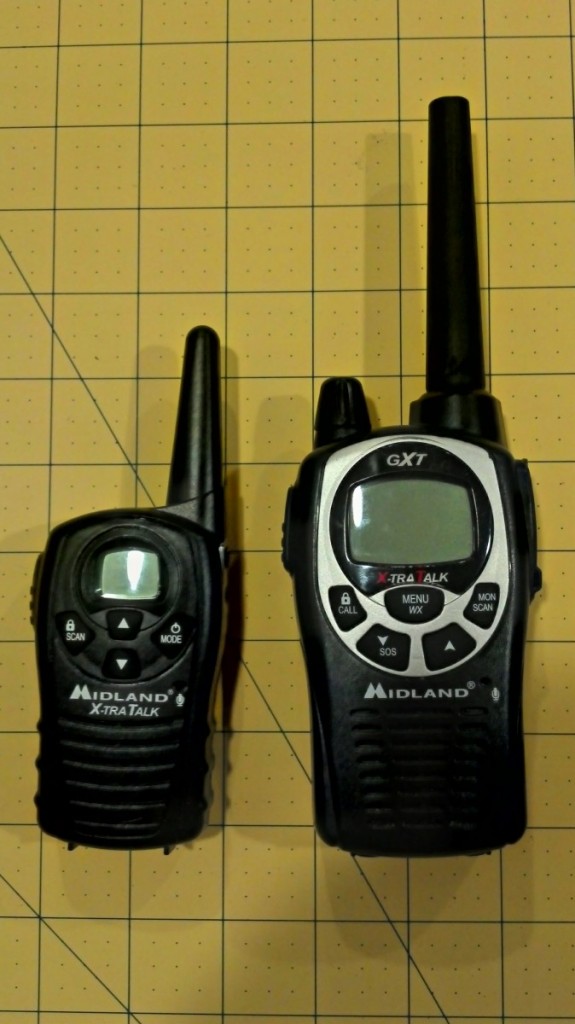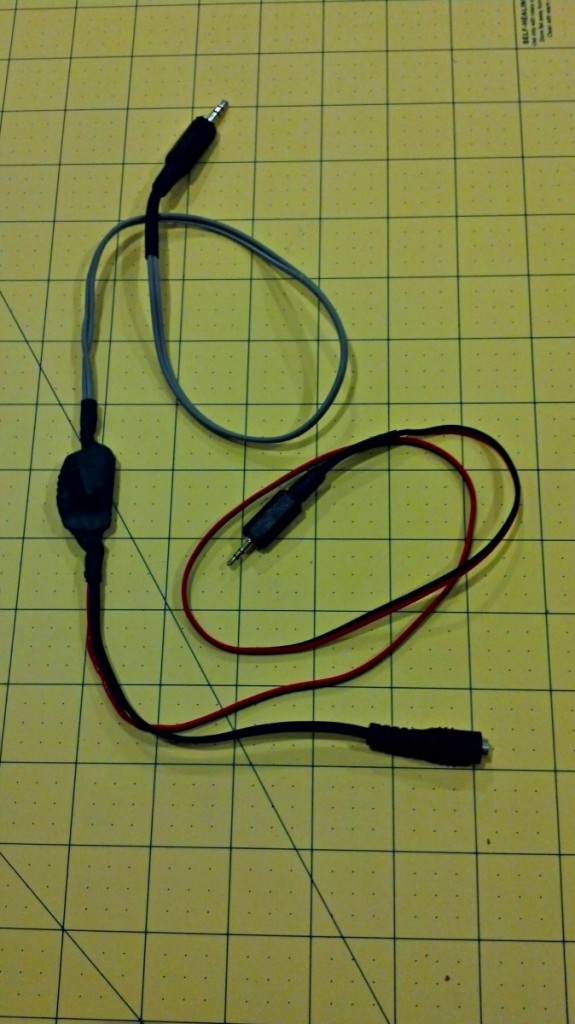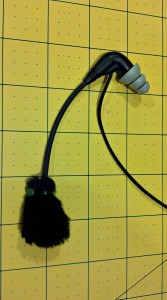Recently I had the pleasure of attending the first annual Rev Team Boot Camp led by Team iQuad. One of the requirements for this clinic was a radio. These radios allow a team to share common music, ease the strain on the team leaders voice, and greatly improve call clarity across the team. This article’s intention is to share my research and opinions with regard to radios and team flying.
I’d already purchased my first pair of radios so that my wife and I could fly with a small team on a trip to Cancun. The radios on this trip were used for calls only as the music was played over a PA system. I was really pleased with the enhanced intelligibility especially with the ambient noise level while standing in the surf. When you’re not following a choreographed routine, added call clarity can make a very noticeable difference in the cohesion of the team, as it takes that half a second “what did he say” processing time out of the equation.
When it came to flying at the team clinic there were three teams learning the same routine at the same time on the beach. Each team needed to start and restart the music in their own time. This simply is not feasible via any sort of PA or boombox system. Feeding the music and the calls into the radio all together is the best way to do this. Some people have found that using a pair of small wearable speakers while wearing a headset has allowed them to accomplish this task. I’ve reverse engineered a Midland headset and put together a simple circuit that allows for easy mixing of the voice and music and its very simple to build. I’ll cover this circuit at the end of this article.
Radio Selection:
First I’d like to cover radio selection. I have been very happy with the radios that I’ve chosen. I have technically chosen two different models as there are two classes of use in the team kite flying venue. You have the team leader radio which is a radio that needs to have good battery life for long transmit sessions. Then you have the receive radios whose battery life is less of a concern as it never transmits. Here I chose cost and physical size as my important factors.
Team Leader Radio: 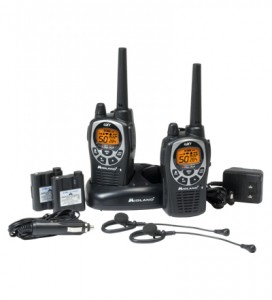
For the team leader radio I chose Midland’s GXT1000. I purchased mine in a GXT1000VP4 kit. The VP stands for “Value Pack”. This meant that it included a car and wall charger, battery packs, and headsets. When I originally purchased this radio I liked the fact that these headsets were included. Now that I have my circuit it was designed to work with any standard 2.5mm cell phone headset and I much prefer this over these very “inexpensive” (read cheap) included headsets.
So in using these radios I’ve found that they do *NOT* have the time out timer (sometimes called a TOT in technical manuals) that some radios have. A time out timer is a feature that many manufacturers put into radios to help save battery life. They are often set for about 5 minutes so that if you accidentally key the radio into transmit after 5 minutes it shuts off and goes back to receive. They assume that if you transmit for more than 5 minutes its probably an accident. In normal use this is usually fine and often preferred but for this application it is a deal breaker! Many radios with this feature do not allow you to disable it.
Another interesting point to note the GXT1000 is listed as waterproof to splashing water. I thought for a beach environment this is not at all a bad thing. Or at the very least if you’re really hardcore (don’t laugh I’ve done it) you won’t have any issues practicing with your team in the rain.
If you are interested, more information can be found here:
Manufacturer’s Site for this Model
Specification Sheet
Owners Manual
Click here to shop for the GXT1000 via Amazon.com and support Kitelife!
Team Member Radio: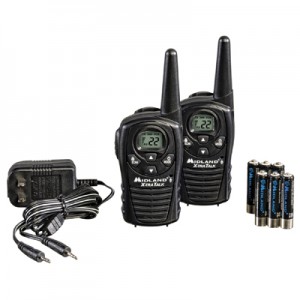
As mentioned when choosing this radio I had cost and size as primary goals. I also though it would be nice to have a common user interface for ease in configuration and compatibility of accessories. For this application I chose the Midland LXT118 radio.
These radios can be found on Ebay in the value pack (pictured) for about 30 dollars after shipping and by themselves for about 24 dollars after shipping. If you’re willing to shop around these radios can be found even in the value pack for just over 10 dollars per radio. Cost was a concern for me as I was looking to buy spare radios in case someone forgot their radio or for people who wanted to join but didn’t own a radio.
These radios are listed as “water resistant” but only to “light water exposure”. Good to know but you’re probably not going to want to test this feature.
The 300mah AAA NiMH batteries that are included in the value pack provided me with a good 10 hours of use. Later I’ll have a section covering other batteries and the charging solution that I plan on implementing (yet to be tested). With after market batteries and reasonable expectations this radio can also be used as a team leader radio. I’ll talk more about this in the batteries segment of this article.
If you are interested more information can be found here:
Manufacturer’s Site for this Model
Specification Sheet
Owners Manual
Comparison Photos:
I’ve taken some comparison photos so that you can see these two radio’s side by side. The smaller “team member” radio is quite a bit less cumbersome to wear but its battery life with the stock battery in transmit leaves a bit to be desired (about 2 hours). The background is a 1 inch grid for size reference.
GXT1000 “Team Leader” Radio Dimenstions (HxWxD) inches: 9.75 x 2.5 x 1.75
LXT118 “Team Member” Radio Dimensions (HxWxD) inches: 5 x 2 x 1.25
Battery Considerations:
The battery packs included from Midland can provide pretty good performance especially if you’re only looking for regular use or if you’re going to be in receive most of the time. This section talks about some of the short comings of the Midland battery solutions and covers some solutions for those crazy individuals who just don’t know how to stop flying. Keep in mind while reading this segment that I’m known for over engineering things and I really like added safety margin!
LXT118:
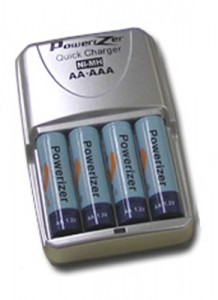 One consequence of the smaller size of the LXT118 is that it takes AAA form factor batteries rather than AA. The larger AA form factor allows for much higher capacity batteries but for a receive radio even the 300mah batteries that are included in Midland’s “Value Pack” provided a good 10 hours of use. A high capacity NiMH AAA pack will provide 1000mah of capacity thus giving you over 3 times the stock pack’s capacity. A battery such as this would be highly recommended if you would like to use the LXT118 as a “Team Leader” radio. This would extend the ~2 hours of operation that I got to ~6 hours of operation. For many users 6 hours of transmit time would get them through a festival. I ran a test on one of these radios using standard Duracell copper top batteries and only got about 2:20 of operation in transmit.
One consequence of the smaller size of the LXT118 is that it takes AAA form factor batteries rather than AA. The larger AA form factor allows for much higher capacity batteries but for a receive radio even the 300mah batteries that are included in Midland’s “Value Pack” provided a good 10 hours of use. A high capacity NiMH AAA pack will provide 1000mah of capacity thus giving you over 3 times the stock pack’s capacity. A battery such as this would be highly recommended if you would like to use the LXT118 as a “Team Leader” radio. This would extend the ~2 hours of operation that I got to ~6 hours of operation. For many users 6 hours of transmit time would get them through a festival. I ran a test on one of these radios using standard Duracell copper top batteries and only got about 2:20 of operation in transmit.
This makes for a very attractive team solution (for a team of 6):
2 LXT118VP's ($30 each)...................$60 2 LXT118's................................$24 Battery solution for team captain radio...$19 _____________ $103 ($17.16 per member)
Click here to shop for the LXT118 via Amazon.com and support Kitelife!
Click here to shop for the LXT118VP via Amazon.com and support Kitelife!
The charger that is included with the LXT118 “Value Pack” is pretty low power. It would take a very long time for that charger to charge the larger capacity batteries. Whats worse is that the charger and radio do not provide any indication as to when the charge has completed. The battery solution I have mentioned in the above lineup is the CH-V3150 combo with 8AAA 1000mah batteries from batteryjunction.com. You can purchase this kit here: http://www.batteryjunction.com/chwosmch8aa21.html. Being that the radios take 3 AAA’s each you’ll have 2 spares. This charger should be able to charge your batteries in about 4 hours and it will provide an indication when charing has completed.
GXT1000:
The GXT1000 takes either its included 700mah battery pack or 4 AA batteries. If you’re using the included battery pack you can get a decent solid days use in receive. If you’re not a heavy user this pack can get you by for a few hours in transmit. But, I highly recommend Alkaline or a set of higher capacity rechargeable NiMH batteries if you’re going to be in transmit most of the time.
The GXT1000 stock charging system comes with a plastic dock that the radios are to be set into. This dock is not only an awkward shape its quite large as far as chargers go. Another problem is the charging contacts on the bottom of the radio are notorious for getting sand in them. Over time these are going to have trouble making connection. For the same $19 dollars on the above radio you can purchase this kit here: http://www.batteryjunction.com/chwosmch4aa2.html. This comes with the same charger but instead of 8 AAA batteries it has 4 AA batteries. These are 2600mah batteries and should provide a good full day (if not multiple days of more reasonable use) in transmit. I’ll try and update this once I’ve had the chance to test these batteries in my radio.
Click here to shop for the GXT1000 via Amazon.com and support Kitelife!
The Crazy-Go-Nuts Solution:
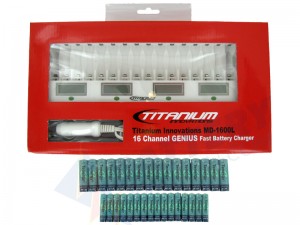 I’ve decided to go with a setup that should last me a good while and is also setup to help bring more people “to the line”. I bought a charger that can charge 16 batteries at a time. Other added benefits of this charger is that it can also fully discharge your batteries to reduce memory effect and it can inform you as to the charge of each battery individually. Essentially it will allow you to charge batteries at multiple different discharge levels and will maintain the batteries properly so as to prolong their life.
I’ve decided to go with a setup that should last me a good while and is also setup to help bring more people “to the line”. I bought a charger that can charge 16 batteries at a time. Other added benefits of this charger is that it can also fully discharge your batteries to reduce memory effect and it can inform you as to the charge of each battery individually. Essentially it will allow you to charge batteries at multiple different discharge levels and will maintain the batteries properly so as to prolong their life.
This charger can be plugged into the wall or your cars accessory adapter and also has 2 USB ports which I will find handy when charging my mp3 player and phone at night in the hotel.
This solution is geared toward having enough batteries to fuel my 2 GXT1000’s as well as my 4 LXT118’s for an entire week (with recharging) of LONG days at WSIKF. The main reason for purchasing the LXT118’s were to have some radios to loan out to those who didn’t have any. Turned out that once they arrived my wife switched out for one of the smaller guys immediately. 😉
Team Leader Audio Circuit:
When you want to be able to play music for your team this little guy makes it work really quite smoothly. This situation comes up often when you want to practice on the beach and you’re not flying a demo. Building your own circuit is really quite easy and all the parts can be picked up at Radio Shack. If this is something you feel up to doing the following documentation should make the task much easier for you.
Once you have this built you simply plug in your radio, headset, and music source and the radio is automatically held in transmit mode. The mic and music source are automatically mixed at proper levels. If you want the ability to adjust the mix between the audio and the mic make the 9.5Kohm resistor a potentiometer.
Schematic:
My Implementation:
My Headset:
Last but not least I’ll mention the headset that I prefer. I’m a big fan of Etymotic products and their Ety-Com headset is no exception. You can find more information about this headset here. I purchased the 3 pin 2.5mm model as that was the only option available when I bought mine years ago. Here is a picture of my headset. You’ll notice a small dead rat on the end of my headset that isn’t in the stock photos.
The dead rat is a bit on the expensive side but I bought it on a whim (after looking at this testimonial on youtube) after my wife had been complaining (yelling at me) every time I turned to look up wind. I bought it here: http://www.thewindcutter.com/shop/index.php?main_page=index&cPath=1_156_158. There is a small green zip tie holding mine on. When flying in really high winds one day it actually blew off my headset and down the beach. This happened during a routine and thus by the end it was gone. I told the company about my loss and they not only replaced it for me they created a coupon code “goflyakite” which gives any others who may be interested 10% off.
Or, click here to shop for this headset via Amazon.com!
Thank You
Well I hope if you’ve made it this far in this article you’re not totally bored by now. Hopefully some of this information is valuable to you and aids you in your decision when getting ready for team flight. I’m really excited about the new idea of being able to have all of the splintered teams across the beach listening to the same music. In the past each member had their own music and we just followed calls that were yelled out by the captain. I really hope this new radio setup sparks some interest in more fliers to join the line. I also think that there are others using FRS radios in the area who will have fun listening in on the calls. I only hope after hearing this for a while they’re even more compelled to join the line kite in hand!
Good winds!
~Brett

